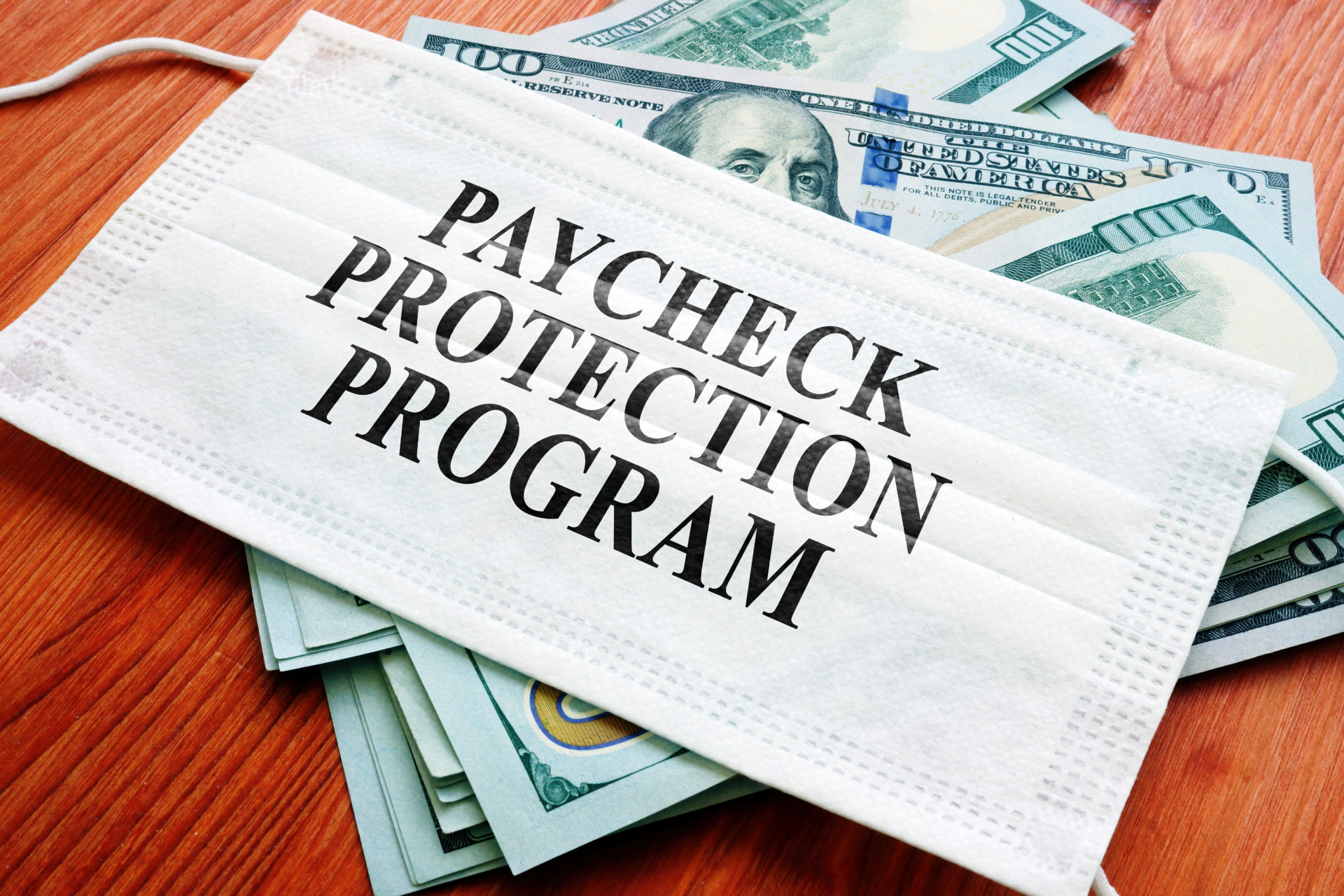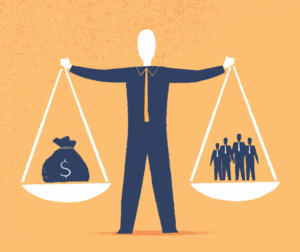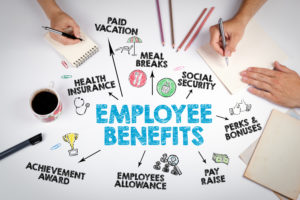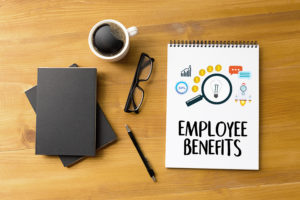
Many small business owners are coming to the end of their allotted Paycheck Protection Program funding and asking, ‘what happens next?’ Others missed out on the first round of funding and are wondering if there is still time to put in a PPP application.
While the money can be a lifeline to businesses that are in danger of closing, navigating the loan terms is, as the Wall Street Journal recently put it, as complicated as the bar exam. Here, we will cover the answers to your most frequently asked Paycheck Protection Program questions, including what you need to know about fulfilling the terms of the loan, repayment, taxes and more.
What is the Paycheck Protection Program?
The Paycheck Protection Program, or PPP, is a small business loan program designed to help companies keep their employees on the payroll in the wake of Covid-19. The first round of $349 billion worth of funding was fully allocated in early April. In late April, a second $310 round of funding was approved.
Can I still apply for the Paycheck Protection Program?
Yes. Though the initial round of funding ran out in less than two weeks, Congress swiftly approved a second round of funding in the amount of $310 billion that has not been fully claimed. Qualifying businesses can complete a PPP application to be considered for funding.
Demand for the second round of funding has been nowhere close to the first round. At the time of this article, The New York Times reported there was still $130 billion left in the fund. Some business owners have been deterred from applying due to the confusing terms and uncertainty about whether they will qualify for loan forgiveness.
Additionally, many large companies gobbled up huge chunks of funding during the first round and later received public blowback. Some of them wound up returning the money. In light of this, the second round was marketed to be more small-business-friendly.
Do I have to pay back a Paycheck Protection Program loan?
Loans secured through the PPP program are 100% forgivable if certain criteria are met. This includes keeping your employees on the payroll for eight weeks. If you have already laid off employees prior to receiving the funds, loan forgiveness depends on their swift re-hiring.
How does PPP loan forgiveness work?
To receive full forgiveness of your PPP loan, at least 60% of the loan amount must be used for payroll costs. If you spend less than that on payroll, you may still be eligible for partial forgiveness.
Forgiveness will also be affected if you lower your employees’ salaries or wages.
If your company’s full-time employee headcount decreases between the time of the loan and the expiration of the loan, the amount of forgiveness will be incrementally reduced. If you laid off an employee and you offer to re-hire them but they decline to accept the offer, this does not affect loan forgiveness.
If your business has been affected because of restrictions from the Secretary of Health and Human Services (HHS), the Director of the Centers for Disease Control and Prevention (CDC), or the Occupational Safety and Health Administration (OSHA), your forgiveness will not be affected by the headcount stipulation mentioned above.
For example, OSHA’s Covid-19 guidelines state that travel restrictions may make travel in and out of certain countries unadvisable. If this reduces your ability to operate at full capacity and keep the same number of workers employed, you would get a pass on the headcount part of the loan forgiveness rule.
Who can apply for the Paycheck Protection Program?
The Paycheck Protection Program is open to small businesses or sole proprietorships with 500 employees or fewer. This includes nonprofits. Businesses with more than 500 employees are eligible in certain industries.
Self-employed individuals, contractors and gig workers are also eligible for PPP loans.
What can Paycheck Protection Program funds be used for?
PPP money must be used directly on expenses that keep the company running. In addition to payroll, PPP funds may be used for rent, mortgage interest, utilities, insurance premiums, or continuation of group healthcare benefits during periods of paid leave.
One important note—if you also received an Economic Injury Disaster Loan or an Emergency Economic Injury Grant in addition to PPP funding, you will need to be very mindful of where each set of funding is spent. Keep the funds and their related spending separate; if you accidentally mix the two (i.e. claiming a rent payment was paid using both PPP and EIDL funds), you are likely to run into problems down the road.
What kinds of records do I need to keep of my PPP fund spending?
Financial software company Intuit recommends keeping a careful record of all expenses on which you use PPP funds. They say you can run payroll as you normally would. For other covered expenses like rent and utilities, track them by using a designated PPP categorization within your normal accounting software. Save hard copies of all bills, invoices and receipts associated with your PPP spending, as you may be required to hand these over when applying for forgiveness.
I got a PPP loan. How do I get loan forgiveness?
You will need to go through a separate process to apply for PPP loan forgiveness. This must be done with your lender during the designated forgiveness period.
The process may vary by lender, but you’ll likely be required to provide documentation of the following:
- The number of employees on your payroll and how much they are paid, including previous payroll and income tax filings
- Records of payments made toward your mortgage, rent, and utilities
- Signed certification that the information provided is accurate and the funds were used in accordance with the program terms
Can I apply for PPP even if I don’t need the money?
“Even if you are not sure you need it, you should still apply!” This was a big piece of misguided advice that circulated during the first round of PPP funding that ultimately wound up causing problems.
On April 23, the SBA release updated guidance that clarified only organizations that need the loan to stay in business should apply for the Paycheck Protection Program. The SBA even went so far as to say that businesses should first consider “their ability to access other sources of liquidity sufficient to support their ongoing operations in a manner that is not significantly detrimental to the business.” In other words, if you are sitting on cash, you must use that first before relying on PPP funding to stay afloat.
The SBA has said it will seek repayment for many of the loans that were made. All loans over $2 million will be subject to SBA review to determine whether the borrower had “adequate basis for the required certification concerning the necessity of the loan request.” In layman’s terms, the organization will work to determine whether the company actually needed the loan. If they determine that is not the case, the borrower will not be eligible for loan forgiveness.
In light of this announcement, thousands of companies have opted to return some $12 billion in loan funding. For some, like Ruth’s Chris and Shake Shack, it was the result of public backlash. Others felt the terms were too unclear or the criteria too stringent for them to feel confident their loan would be forgiven.
Am I responsible for interest on my PPP loan balance?
If your full loan amount is forgiven, no. If any of the balance is not forgiven, your loan will be subject to interest according to the terms you agreed to with your lender.
Is PPP loan money taxable?
No. Usually forgiven debt counts as taxable income, but according to the CARES Act, this will not be the case with forgiven PPP loans.
However, this means that some expenses that are normally tax deductible will not be if they are related to forgivable PPP loans. This is to prevent a double-dipping tax benefit situation. For example, usually wages paid to employees are deductible expenses. But since PPP loan funding will not be taxable, the wages paid using that funding will not be considered deductible.
How do I apply for a PPP loan?
You can complete a PPP application through any SBA lender or through a federally insured credit union. You can find an approved lender near you using the SBA’s search tool.
Maintain a Strong Staffing Strategy with 4 Corner Resources
Your employees are the backbone of your company. Having a cohesive strategy to attract and retain top talent in the wake of Covid-19 will help you weather the storm. The staffing experts at 4 Corner Resources are here to be your talent acquisition partners, helping you prioritize your current hiring needs and map a plan for the future.
Contact us now to schedule your free consultation.
Keep rising costs from getting you down with our ‘Reducing Labor Costs’ eBook.
Learn from our experts on how to streamline your hiring process.


